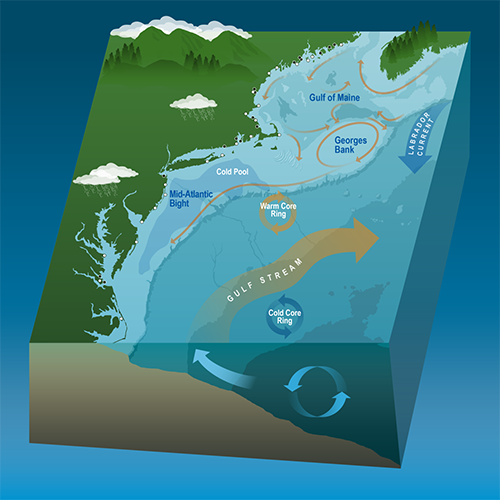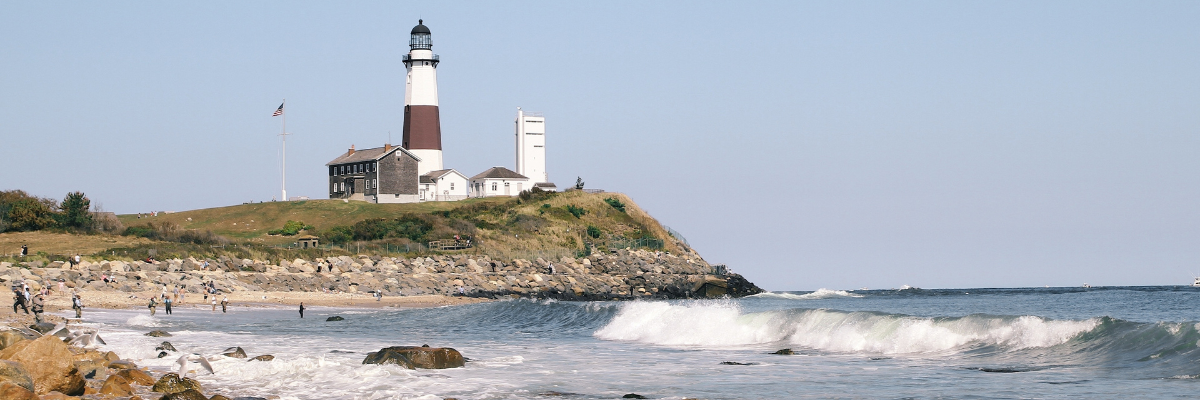The Mid-Atlantic Bight falls between Cape Hatteras, North Carolina, and Martha’s Vineyard, Massachusetts, extending westward into the Atlantic to the 100m isobath. Primary productivity is highest in the nearshore and estuarine regions, with coastal phytoplankton blooms initiating in the winter and summer, although the timing and spatial extent of blooms varies from year to year. The relatively productive continental shelf supports a wide variety of fauna and flora, including commercially important species such as sea scallop (Placopectin magellanicus), black sea bass (Centropristis striata), and summer flounder (Paralichthys dentatus) among many others. The shelf break also forms habitat for many species of hard corals, soft corals, and sea fans that are distributed widely through the extent of the Bight, almost all of which occur at depths >50m (NEFSC Corals).
The Mid-Atlantic Bight is important habitat for the fin, humpback, critically endangered North Atlantic right whales, and other large whales as they migrate southward to warmer waters, and often as far south as the Caribbean. The Bight is also habitat for five species of sea turtles, including loggerhead (Caretta caretta), Kemp’s ridley (Lepidochelys kempii), leatherback (Dermochelys coriacea), hawksbill (Eretmochelys imbricate), and green (Chelonia mydas) turtles. All of these turtles are listed under the Endangered Species Act as either threatened or endangered (NEFSC Turtles).

